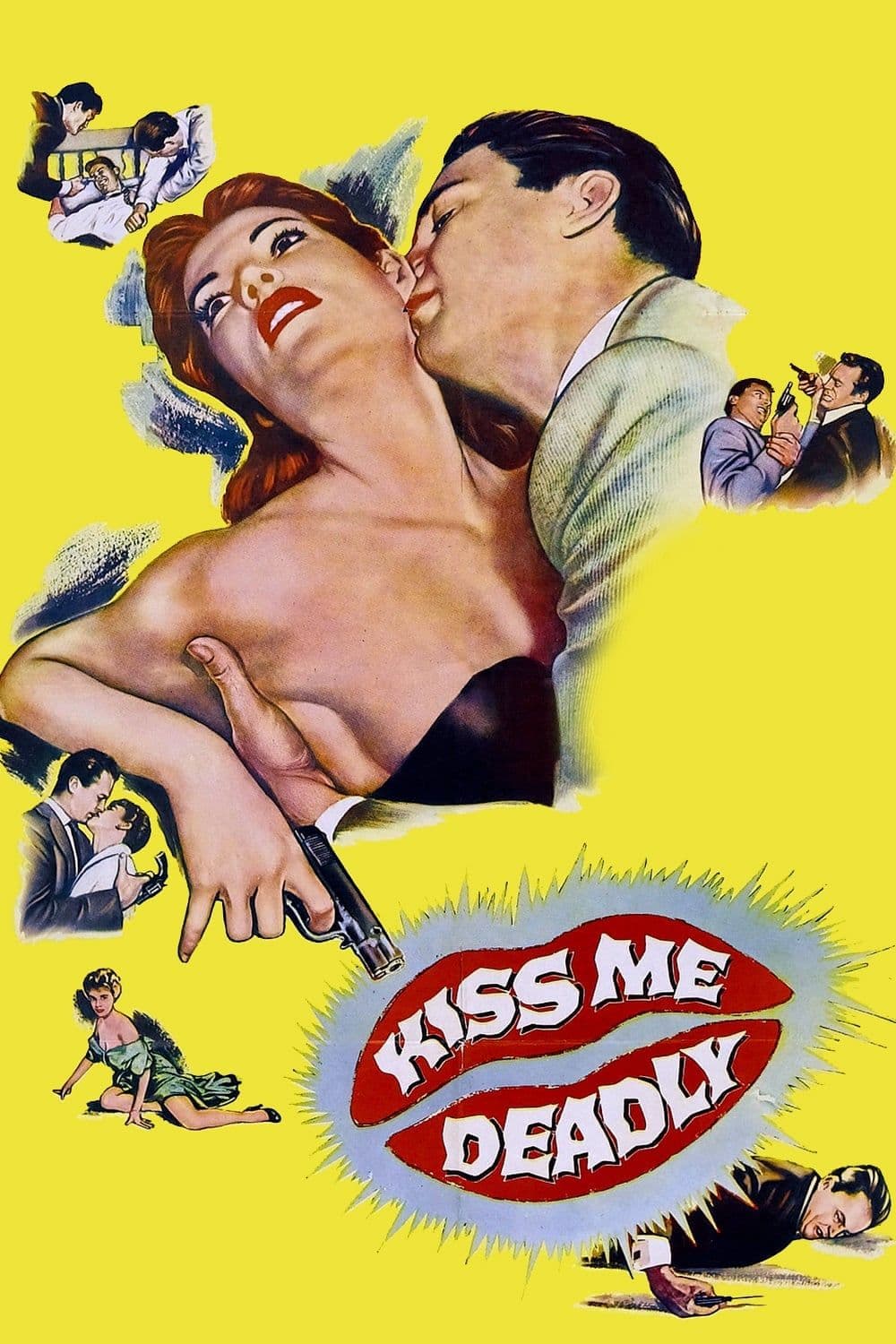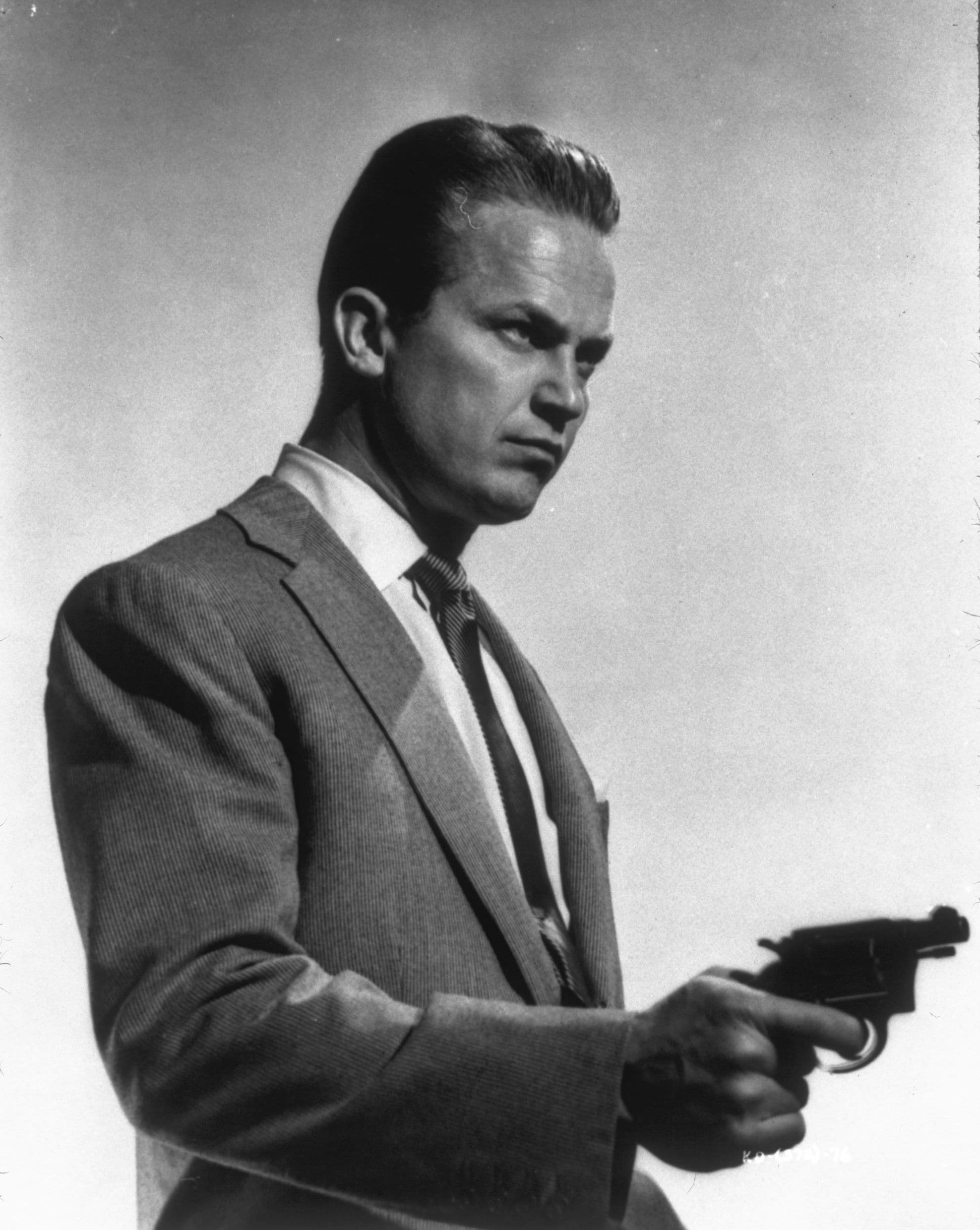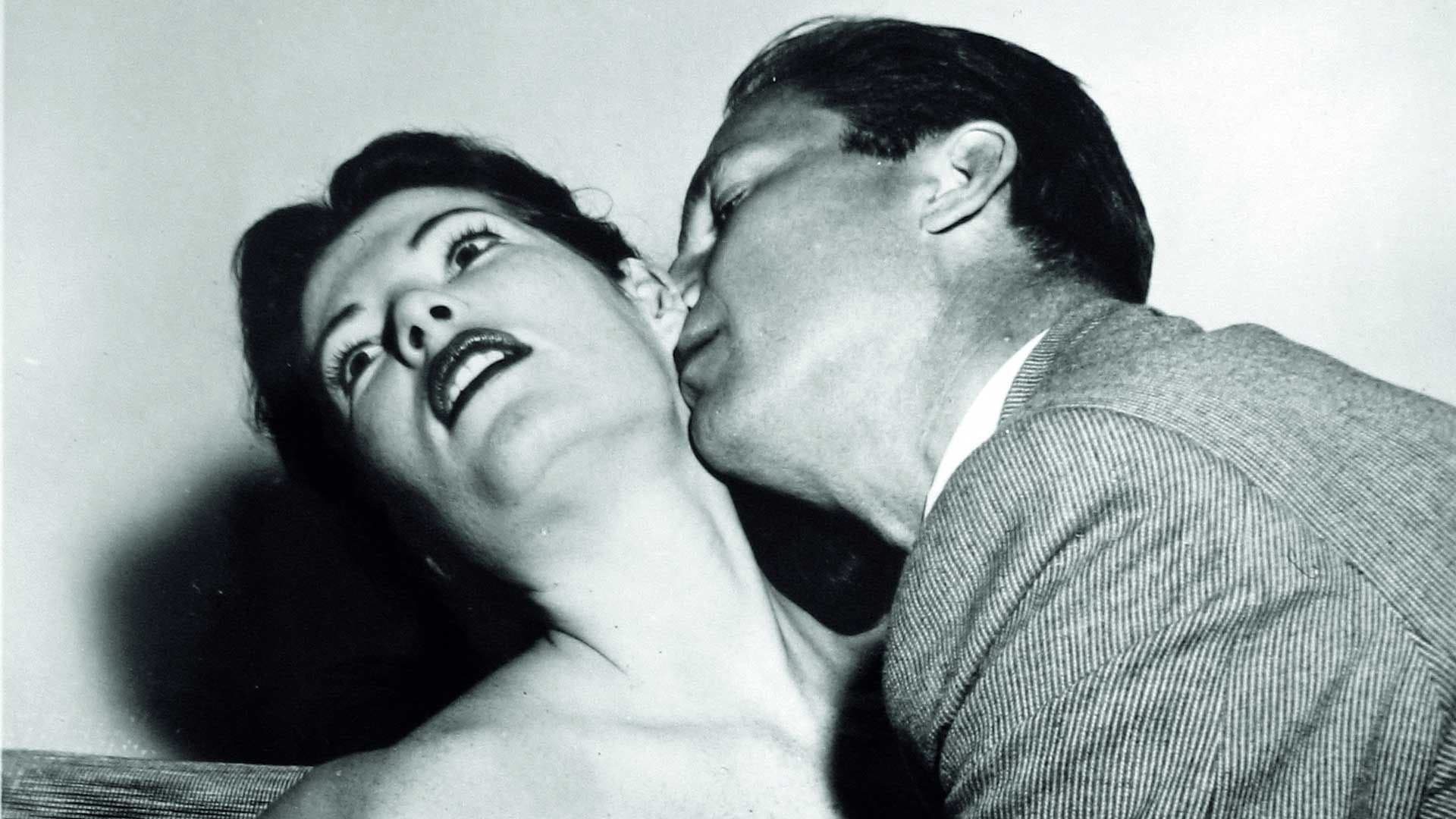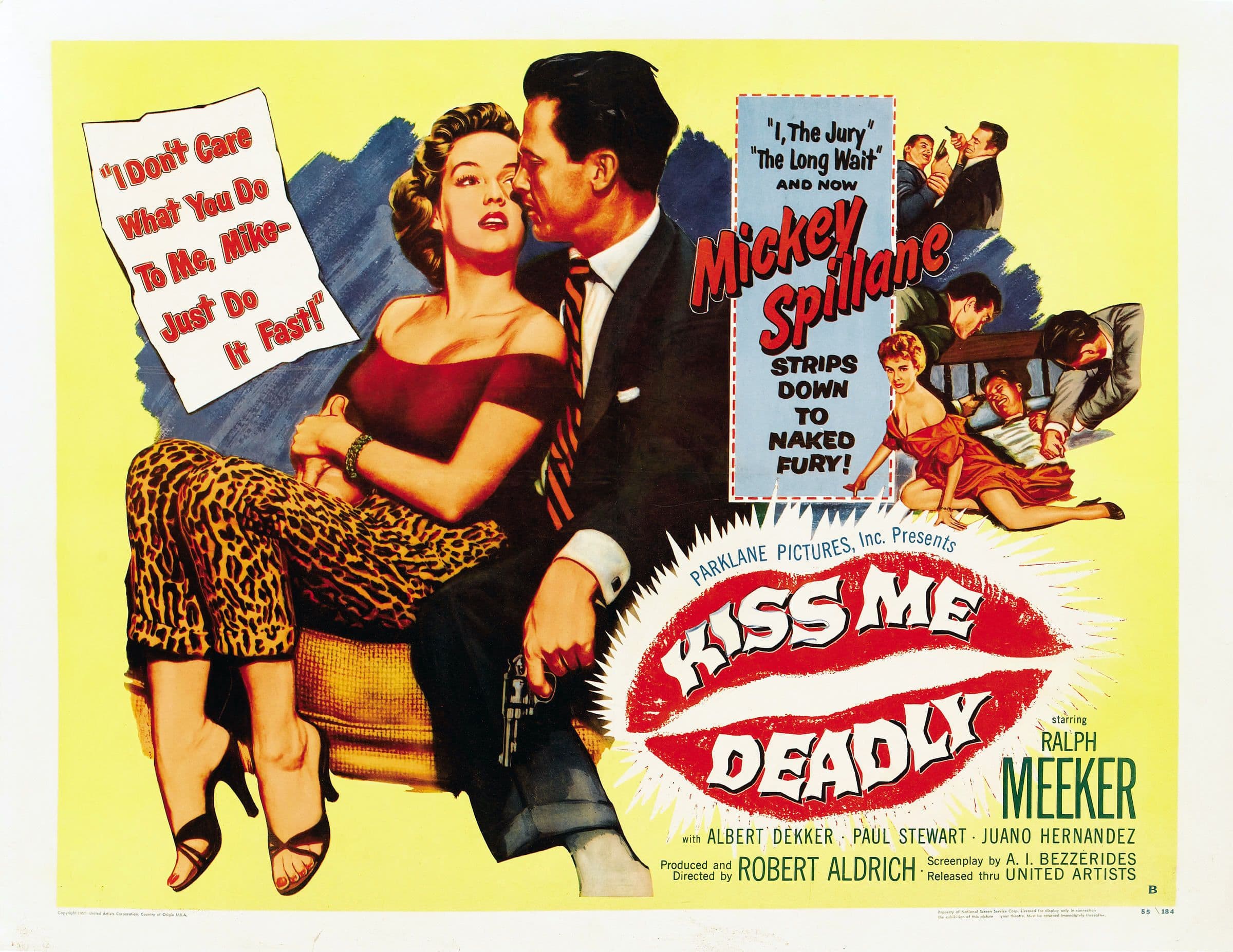
Kiss Me Deadly
1955
Rate this movie
Average: 0.00 / 5
(0 votes)
Director
Aldrich and Spillane: quality cinema and mass-market literature. Truly a strange pairing that gives rise to one of the most disturbing noirs of all time. A brilliant short circuit between the visceral intelligence of a director like Robert Aldrich, capable of reading the dark folds of the human soul with an almost brutal lucidity, and the muscular, crude, and irresistibly pulp prose of Mickey Spillane. The result is not just a simple adaptation, but a deconstruction and reinvention of the genre, a work that pushes the boundaries of experimentation, almost a prototype of what decades later would become neo-noir, with its amorality and existential nihilism.
Mike Hammer is an uncommon detective: dull-witted, crude, and without feelings, he moves like a caterpillar and grinds out results with his rough tenacity. His figure is the embodiment of a post-war anti-hero, a man whose moral compass is irrevocably demagnetized, whose toxic machismo is a shield behind which perhaps an even deeper void lies hidden. Light years away from the biting irony of Philip Marlowe or the cynical wisdom of Sam Spade, Hammer is pure brute force, an Id in the flesh that reduces every interaction to a physical or verbal confrontation, anticipating the explicit and disenchanted violence that would become a stylistic hallmark of certain 70s cinema. His "crudeness" is not just a character trait, but almost an aesthetic choice, which Aldrich exalts uncompromisingly, plunging the viewer into a world where beauty is merely a fleeting illusion and brutality is the current currency.
In this case, he finds himself grappling with a traffic of radioactive material that a shady individual wants to resell to a foreign power. A murky vortex of subterfuges will begin, which will reveal a diabolical plan. But the true "MacGuffin", the famous "Great Whatzit", the enigmatic luminescent box that Hammer pursues with dull determination, transcends its narrative function to become a terrifying metaphor. It is not just an object of desire, but a true atomic Pandora's Box, a visceral symbol of the nuclear fear that gripped America and the entire world in the 1950s. The deadly glow it emits, invisible yet tangible, alludes to an unspeakable horror, to the end of the world at man's own hand. This detail, apparently a simple narrative device, elevates the film from a mere detective story to a desperate allegory of an era.
The film is paradigmatic for its latent (and not even too hidden) ecological and anti-nuclear sentiments. So much so that it earned screenwriter A.I. Bezzerides a place on Hoover's blacklists, branded as a leftist sympathizer. Furthermore, Elia Kazan's story teaches us that during McCarthyism it was enough to be subtly progressive, or even just critical of the establishment, to be branded as dangerous red dissidents. This political pressure is not a mere biographical anecdote, but permeates every frame of the film. The claustrophobic atmosphere, generalized distrust, arbitrary violence, and the sense of a world on the brink of collapse directly reflect the hysteria of the Witch Hunt, where paranoia was omnipresent and the threat, internal or external, was always ready to manifest with a blinding flash. Aldrich, with almost suicidal courage for the era, not only did not conceal these allusions, but amplified them, transforming political anxiety into a palpable existential anguish.
The film succeeds in capturing Spillane's rhetorical brutality, crafting it into a compelling detective mechanism to be unraveled with patience. But it is above all Aldrich's direction that transcends the source material. Through Ernest Laszlo's expressionistic cinematography, imbued with chiaroscuro and distorted angles that reflect the protagonist's twisted psyche and the morally corrupted atmosphere, "Kiss Me Deadly" becomes a work of visual art. The distorted frames, insistent close-ups, fragmented narrative pacing, and the use of an almost alienating sound – consider Christina's desperate cry at the beginning of the film, a primal scream that tears through the silence – create a sense of constant unease. Nighttime Los Angeles is no longer a city of charm and romantic shadows, but a labyrinth of dark alleys and dilapidated apartments, an urban hell that swallows its inhabitants. The ending, a cathartic and terrifying explosion that alludes to total annihilation, was so controversial that it was modified at the behest of censorship, but even in its softened version it retained an unparalleled unsettling power. The film not only defined the noir aesthetic for a new generation, but influenced subsequent masterpieces, from the trunk in Tarantino's "Pulp Fiction" (a declared homage to the "Great Whatzit") to the cinema of David Lynch, for its ability to delve into the darkest and most irrational folds of the American unconscious. A seminal work, whose flame, fortunately, has never gone out.
Country
Gallery





Comments
Loading comments...